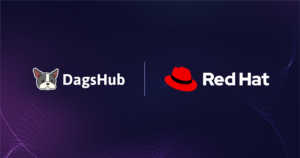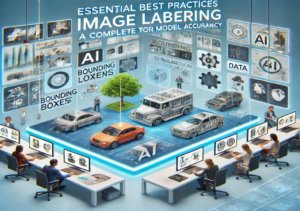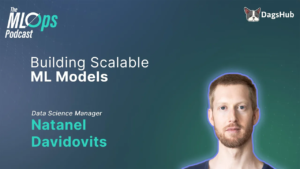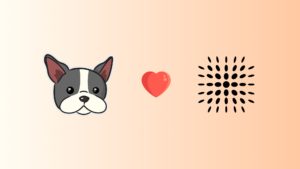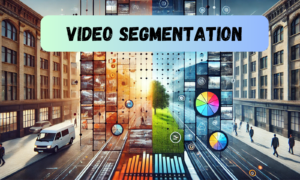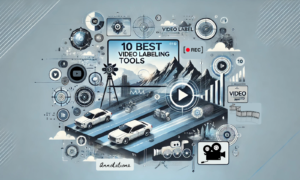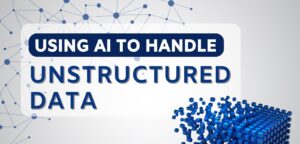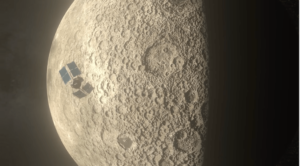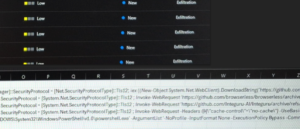This comprehensive guide will introduce you to the top 7 image segmentation tools that are expected to lead the market in 2025.
[[{“value”:”
Image segmentation is one of the most important methods in computer vision and artificial intelligence technologies. This approach partitions an image into different regions where each region represents a meaningful object or area of interest. It is highly utilized across various applications, from autonomous car navigation to medical imaging by segmenting digital images into separate, meaningful pieces.
It is tough to overstate how important picture segmentation is becoming. Accurately identifying and characterizing key visual elements has become essential for improving workflows, gaining new insights, and driving innovations in industries like healthcare and transportation. For example, in transportation, analyzing the visual data (segmented images) from traffic cameras can improve traffic flow management, reduce congestion, and improve safety. However, as AI and computer vision are advancing, users need to keep up with the most recent developments as various segmentation tools continue to fuel innovation.
This comprehensive guide will introduce you to the top 7 image segmentation tools that are expected to lead the market in 2025. For each tool, main features, performance capabilities, and ability to support use cases will be included. Equipped with such knowledge, you will find the perfect segmentation solution to support your AI and computer vision projects.
Importance of Image Segmentation in AI and Computer Vision
The goal of image segmentation is to simplify and/or alter an image’s representation to make it more meaningful and accessible for analysis. Segmentation allows a detailed comprehension of the visual content of a picture by recognizing and defining discrete items, structures, or areas.
This method is essential to many computer vision and artificial intelligence applications. Segmentation algorithms, for example, can correctly identify and distinguish between healthy and sick tissues in medical imaging. This helps in early diagnosis and personalized therapy planning. Accurately segmenting anatomical structures, including organs, tumors, or blood arteries, can give medical personnel vital information that improves patient outcomes and decision-making.
Source: https://www.statcan.gc.ca/en/data-science/network/image-segmentation
Apart from the medical domain, segmentation is highly used in other domains like analysis of satellite and aerial imagery to monitor objects on Earth and their changes. Segmentation algorithms also help in resource management, urban planning, and environmental monitoring by identifying and categorizing land use, tracking crop health, and mapping natural resources. Accurately segmenting road features, pedestrians, and other obstacles is crucial for safe navigation and decision-making in the field of autonomous cars. This enables self-driving systems to perceive their environment more accurately and react appropriately.
Source: https://deepsense.ai/satellite-images-semantic-segmentation-with-deep-learning/
As segmentation divides images into coherent parts, it allows for a greater comprehension of how the different elements of an image are related to each other. This results in more accurate predictions and greater transparency of decision-making processes.
Criteria for Selecting the Best Image Segmentation Tools
The market has experienced an increase in tools and solutions that meet a wide range of user needs as the demand for smart picture segmentation capabilities keeps rising. The following important factors must be taken into account when weighing the different options:
Performance and Accuracy
The main goal of any image segmentation tool must be a high-quality, reliable output. The tools must be able to handle different types of image formats and offer segmentation with high precision and consistency in possibly complex or difficult scenes. It is important to carefully evaluate aspects like the tool’s overall segmentation quality, resistance to noise and changes, and capacity to precisely define object boundaries.
Ease of Use
The perfect segmentation tool should be accessible to users of all experience levels from beginners to the most advanced experts. Consider the tool’s user interface, training needs, and ease of intuitiveness to ensure that workflows are in a smooth, efficient manner. Tools that are intuitive in creating annotations, real-time previews, and guided workflows save an enormous amount of time for non-technical team members.
Integration with ML Frameworks
Combining image segmentation with well-known machine learning frameworks, including TensorFlow, PyTorch, etc. is essential because it is frequently a fundamental part of wider AI and computer vision pipelines. This direct integration enables a smooth transition between preprocessing, training, and inference stages for various segmentation models. Moreover, it is observed that tools that integrate with ML frameworks support advanced features like real-time augmentation and fine-tuning and save time during development.
Cost and Licensing
Consider both upfront and recurring costs when analyzing each tool’s long-term financial effects. Recognize the distinctions between commercial and open-source products, as well as the support and licensing choices that each offers. Commercial tools frequently offer strong customer support and frequent updates, which can be beneficial for enterprise-level installations, even when open-source alternatives might offer greater flexibility.
Scalability and Customizability
Assess the tool’s scalability and customisability by looking at its capacity to manage huge datasets and projects as well as its ability to adapt to changing features, models, and workflows to meet your unique requirements. This covers factors like the platform’s scalable architecture, the availability of advanced annotation options, and the ability to integrate custom algorithms or pre-trained models.
By closely reviewing all these points, you would be able to identify the best image segmentation tool for your project needs and capabilities along with your budget considerations.
Improve your data quality for better AI
DagsHub helps you easily curate and annotate your vision, audio, and document data with a single platform.
Top 7 Image Segmentation Tools for 2025
The correct tool can significantly change your AI and computer vision projects as you traverse the challenging field of image segmentation. You may find a wide range of advanced tools on the market that are made to address the changing demands of visual data analysis. These technologies offer intelligent machine learning capabilities, smooth integrations, and advanced collaborative capabilities that go beyond simple annotation. Whether your focus is on developing driverless vehicles, medical imaging, or cutting-edge research, you will find technologies that can enhance your visual data processing and use previously unknown knowledge and efficiency.
DagsHub Annotation
An advanced visual data annotation tool, DagsHub Annotation includes image segmentation features with ease. With its simple interface, this DagsHub enables both new and seasoned users to easily add, edit, and manage pixel-level comments on a variety of image types.
Source: https://dagshub.com/docs/use_cases/annotation/
One of the great advantages of DagsHub Annotation is that it integrates really well with very popular frameworks for machine learning, like TensorFlow and PyTorch. So, the workflow is kept smooth to export the annotated data to be used for training and fine-tuning segmentation models easily in these frameworks. Scalability and collaboration ability make the overall product a perfect fit for large-scale projects involving distributed teams.
Pros
You’ll value the user-friendly, web-based interface that makes annotation simple.It easily combines PyTorch and TensorFlow to provide you with strong machine-learning skills.It makes use of powerful collaboration and version control tools Like GitHub, DVC, MLFlow, etc. that let your team collaborate effectively.It provides flexible pricing options that can scale with your project’s needs.DagsHub benefits from support for a wide variety of image formats and annotation types.DagsHub is not only an annotation tool, it also handles the entire ML lifecycle, from annotation, through experimentation, and model evaluation.
Cons
You might find the customization options limiting if you’re an advanced user.The learning curve might be steeper for users with no prior annotation experience. However, if you carefully follow the DagsHub’s documentation, things can get pretty easy.
Labelbox
Labelbox is a cloud-based data annotation tool with image segmentation capabilities. It provides extraordinary tools for powerful segmentation to annotate objects, scenes, and regions of interest from images with speed and accuracy. It also provides machine learning-assisted workflows that make the annotation process much smoother and faster.
Source: https://docs.labelbox.com/docs/label-data
As an example, Labelbox contains integrations with most of the AI and computer vision tools including TensorFlow, PyTorch, and OpenCV to be used in synchronizing an effortless pipeline. The system enables injecting annotated data into training and deployment workflows easily. It is rich in more advanced features, such as automated quality assurance and capacities for team collaboration. Therefore, it might be suitable for big-scale enterprise image segmentation projects
Pros
Uses effective processes assisted by machine learning to increase the efficiency of your annotations.With Labelbox you can experience seamless integration with TensorFlow, PyTorch, and OpenCVIt makes use of extensive team collaboration and management tools.You can take advantage of cutting-edge quality control techniques that guarantee annotation accuracy.You get a cloud-based infrastructure that is scalable so it can expand with your annotation needs.
Cons
Compared to other image segmentation tools, the pricing could be a little higher.The learning curve can be steep for non-technical team members.Additional training may be required for advanced features.Complex projects could require a large amount of setup time at first.
SuperAnnotate
SuperAnnotate is a multi-purpose image and video annotation platform. With its comprehensive features involving powerful annotations along with machine learning-based capabilities, users can easily create accurate outlines that separate objects, scenes, or regions of interest within their visual data.
Source: https://www.superannotate.com/blog/introducing-superannotate
The most significant feature of SuperAnnotate is its very high, efficient ability to process large-scale datasets. Thus, scalable architecture and good infrastructure of the platform make it easy to process and annotate millions of images, which is the most attractive option for enterprise-level computer vision projects.
SuperAnnotate also has more integration options, for example, integrating with popular ML frameworks and custom API integration. Because of its adaptability, the annotated data can be easily integrated into current computer vision and AI pipelines.
Pros
Get access to powerful segmentation techniques that can be enhanced by machine learning.You can take advantage of a platform that is scalable and built to manage massive image and video information.You can benefit from extensive integration possibilities with top AI frameworks.Experience robust automation features and adaptable workflows.Make use of flexible license arrangements and competitive pricing.
Cons
The learning curve may be more difficult for you than using beginner-friendly tools.Technical know-how can be needed for more complex customization.When dealing with exceedingly complex image datasets, performance can vary.
CVAT (Computer Vision Annotation Tool)
CVAT (Computer Vision Annotation Tool) is an open-source tool for image and video annotation, backed with very strong image segmentation capabilities. It is under maintenance and development from Intel. CVAT is highly customizable and feature-rich for instance, polyline, interpolation-based, and so forth computer vision tasking.
Source: https://viso.ai/computer-vision/cvat-computer-vision-annotation-tool/
This feature makes the CVAT program very strong on the performance and efficiency of handling large datasets and complex scenes. It also provides real-time rendering along with smooth interaction in imagery with high resolution.
Additionally, CVAT’s open-source nature and extensive documentation make it an attractive choice for technical users and researchers who value flexibility, customization, and community support. The ability to extend the platform through plugins and APIs further enhances its versatility, allowing users to tailor the tool to their specific needs.
Pros
Powerful, open-source image segmentation tool.You can benefit from the ability to handle large-scale datasets and complex scenes.Enjoy extensive customization through plugins and API integrations.Access strong community support and active development.Save on licensing costs with a completely free platform.
Cons
The learning curve will be higher than with commercial options.Restricted non-technical people’s access to innovative features.Long-term support and maintenance greatly depend on community participation.Advanced features might need a lot of technical work.
Labeller
Labeller is an easy-to-use platform for annotating images that has strong segmentation features. Both beginner and expert users may easily produce complete pixel-level annotations on a number of image types using Labeller’s user-friendly interface and extensive annotation capabilities.
Source: https://www.labellerr.com/image-annotation-platform
Labeller’s focus on teamwork and collaboration is one of its most notable aspects. With the help of the platform’s strong project management and review capabilities, remote teams may collaborate easily on challenging picture segmentation tasks.
In addition, Labeller’s interface with well-known machine learning frameworks, such as PyTorch and TensorFlow, guarantees a seamless data pipeline that makes it simple to include annotated images in training and deployment processes.
Pros
Discover a simple, easy-to-use UI with powerful annotation capabilities.Make use of strong project management and collaboration tools.Integrate with top machine learning frameworks with ease.Explore solutions that are both scalable and adjustable to meet your expanding needs.Get flexible license options and competitive pricing as per market standards.
Cons
Advanced customization options are limited for power users.Performance may degrade with extremely large datasets.More training may be necessary for complex annotating tasks.It can be difficult to integrate with certain specialized machine learning frameworks.
Roboflow
Roboflow is a full-featured computer vision framework with strong picture segmentation features. Roboflow is a great choice for both beginners and seasoned AI/CV practitioners because it is made to optimize the complete ML workflow and provides a set of tools for data preparation, model training, and deployment. Moreover, it also provides a feature for segmentation utilizing the Segment Anything Model that can identify the precise location of either specific objects in an image or every object in an image.
Source: https://blog.roboflow.com/how-to-use-segment-anything-model-sam/
The key strength of Roboflow is its focus on simplifying the process of image segmentation. It integrates intuitive annotation tools, automated data augmentation features, and seamless integration with popular ML frameworks like TensorFlow and PyTorch to simplify how users create high-quality segmentation datasets and train robust models.
The scalability of the infrastructure of Roboflow, as well as its options for deployment, also help make it a great fit for a broad range of organizations from small startups to large enterprises. It makes the entire computer vision workflow smooth by automating model optimization and deployment, freeing up users to focus on their core business objectives.
Pros
Comprehensive computer vision platform with robust segmentation tools.Provides streamlined workflow for data preparation, model training, and deployment.Intuitive annotation tools and automated data augmentation features.Seamless integration with leading machine learning frameworks.Scalable cloud-based infrastructure and deployment options.
Cons
Pricing can be higher compared to open-source alternatives.Customization options might be limited for advanced users.Some advanced features require higher-tier plans.Learning to use all platform features can take time.
Dataturks
An open framework for data annotation, Dataturks is particularly good at image segmentation tasks. Both beginner and advanced users can easily generate complete pixel-level annotations for a range of image types using Dataturks’ user-friendly interface and extensive annotation toolkit.
Source: https://www.youtube.com/watch?v=F9cgcz-cMU8
One of the key advantages of Dataturks is its strong focus on collaboration and team-based workflows. The platform includes robust project management features, version control, and review mechanisms, making it an ideal choice for organizations with distributed teams working on large-scale image segmentation projects.
In addition, Dataturks is an excellent choice because of the seamless integration with some machine learning frameworks which ensure a pipeline for data from annotation to model training and deployment. Scalable infrastructure and completely customizable workflows make it an excellent choice for enterprises looking for a holistic image segmentation solution.
Pros
user-friendly, web-based interface with extensive annotation capabilities.Make use of robust project management and team collaboration tools.Integrate with top computer vision and AI frameworks with ease.Competitive pricing and flexible licensing options
Cons
Advanced customization options are limited for high-tech applicationsPerformance may degrade with extremely large datasetsComplex annotation tasks require a high level of expertise to operate.Integration with some specialized machine learning frameworks can be challenging.
Comparison Table of Image Segmentation Tools
Tool
Accuracy
Supported Frameworks
Ease of Use
Customizability
Price
Ideal Use Cases
DagsHub Annotation
Very High
TensorFlow, PyTorch
Intuitive GUI and CLI options
Moderate
Free to $99/month
Enterprise-level projects, distributed teams like Medical imaging, satellite analysis, object detection
Labelbox
Very High
TensorFlow, PyTorch, OpenCV
Highly user-friendly
Highly customizable
$500/month and up
Large-scale, complex segmentation tasks like Autonomous vehicles, and industrial automation
SuperAnnotate
Exceptional (Medium)
Custom API integration
Extremely fast and efficient
Highly customizable
$99/month and up
High-volume, high-resolution image/video annotation
CVAT
High
Custom API integration
Moderate learning curve
Highly customizable
Free
Research, academic, and open-source projects
Labeller
High
TensorFlow, PyTorch
User-friendly with advanced tools
Highly customizable
$99/month and up
Small to medium-sized teams, beginner-friendly like in Retail analytics, urban planning, environmental monitoring
Roboflow
Very High
TensorFlow, PyTorch
Intuitive and streamlined
Highly customizable
$100/month and up
End-to-end computer vision workflows
Dataturks
Very High
Custom API integration
Beginner-friendly
Moderately customizable
$99/month and up
Collaborative, distributed image segmentation projects.
How to Choose the Right Image Segmentation Tool for Your Needs
Selecting the perfect image segmentation tool for your project is critical and requires consideration of specific requirements and constraints. Here are some key factors:
Identify Your Requirements
Define your project’s goals, the kinds of images you are going to work on, and the level of precision and accuracy expected. This, in turn, will help narrow down some options and pick the best according to your actual needs. For instance, if you’re working with high-resolution medical images and need extremely accurate segmentation, tools like DagsHub, Labelbox, or SuperAnnotate would be much more appropriate than a beginner-friendly counterpart.
Evaluate Scalability
This consideration should hold to the size and complexity of the dataset. If your dataset is large in scale and high resolution in imagery, look for tools that can cope with workloads without performance or accuracy compromise. Solutions like DagsHub, CVAT, and SuperAnnotate are designed for efficient processes and annotating millions of images and are ideal for enterprise-level projects.
Consider Team Collaboration Features
If your project has multiple users or team members distributed across various locations, prioritize tools rich in collaboration features, including project management, version control, and real-time annotation. Platforms such as Dataturks and DagsHub Annotation significantly excel in this area by offering comprehensive workflows for teams and easy collaboration.
Look at Future Support and Updates
Examine the tool’s long-term feasibility, including the vendor’s commitment to ongoing development, bug fixes, and feature enhancements. Compared to commercial solutions with specialized customer support and frequent updates, open-source solutions like CVAT might be more flexible, but they might also demand more internal resources for maintenance and support.
Evaluate Integration and Customization
Based on your specific use case, determine whether you need high levels of integration and customization. If you do need the end annotated data strongly integrated into your AI and computer vision pipeline, then you should give more preference to tools like Roboflow or Labelbox. For projects requiring a high degree of customization, the open-source nature and extensibility of CVAT may be more up to your needs.
While evaluating all these factors closely, you will be able to find the image segmentation tool that well suits the needs of your project and smoothen the implementation cycle.
Conclusion
After reading this article, you now know that Image segmentation is an essential technique in the AI and computer vision communities, with rich applications and supporting a large-scale understanding of visual data. It has led to leaps in several industries and will continuously influence the market of tools required for segmentation and segmentation solutions in practice. Practitioners should stay updated on available solutions and their capabilities in continuous market development.
In this comprehensive guide, you have learned about the top 7 image segmentation tools that are expected to lead the industry in 2025. From cloud-based alternatives to open-source options, each of these solutions provides unique strengths and features, directly supporting your AI and computer vision project requirements.
Whether you’re working on medical imaging, autonomous car development, or any other computer vision application, the tools shown in this article can provide the segmentation capabilities you need to unlock new levels of accuracy, efficiency, and insight. Carefully evaluating your requirements combined with the insights you gain from this article will allow you to make the right choice when it comes to the image segmentation tool that will support your AI and computer vision projects.
“}]]


